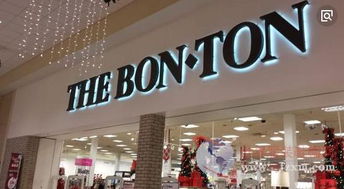Bon Ton Model Definition: A Comprehensive Overview
The bon ton model, a term often used in the context of social behavior and etiquette, refers to a set of conventions and norms that govern proper conduct in various social situations. This model is particularly relevant in formal settings, such as business meetings, diplomatic events, and high-society gatherings. In this article, we will delve into the definition of the bon ton model, its historical background, key principles, and its application in different contexts.
Historical Background

The concept of bon ton originated in 18th-century France, where it referred to the polite and refined behavior expected of the upper classes. Over time, the term has evolved to encompass a broader range of social norms and conventions. Today, the bon ton model is a blend of historical traditions and contemporary etiquette, providing a framework for appropriate behavior in a variety of settings.
Key Principles of the Bon Ton Model

The bon ton model is built upon several key principles that guide proper conduct:
-
Politeness: The foundation of bon ton is politeness. This includes being courteous, respectful, and considerate of others’ feelings and opinions.
-
Formality: In formal settings, the bon ton model emphasizes the importance of adhering to established protocols and conventions.
-
Non-confrontation: Avoiding conflict and confrontation is a crucial aspect of the bon ton model. This involves being diplomatic and tactful in all interactions.
-
Adaptability: The bon ton model recognizes that social norms can vary depending on the context. Being adaptable and open to different expectations is essential.
Application in Different Contexts

The bon ton model is applicable in a variety of contexts, each with its own set of expectations and protocols. Here are some examples:
Business Meetings
In a business setting, the bon ton model emphasizes the importance of professionalism, punctuality, and clear communication. Key aspects include:
-
Arriving on time: Being punctual demonstrates respect for others’ time and commitment.
-
Professional attire: Dressing appropriately for the occasion is crucial in maintaining a professional image.
-
Clear communication: Being concise, respectful, and open in discussions is essential for effective communication.
Diplomatic Events
Diplomatic events require a high level of formality and politeness. Key aspects include:
-
Introductions: Following proper introductions and addressing individuals by their titles and surnames is important.
-
Gift-giving: Offering gifts is a common practice, but it’s essential to choose appropriate gifts and follow local customs.
-
Non-confrontational dialogue: Engaging in diplomatic discussions that avoid conflict and promote mutual understanding.
High-Society Gatherings
High-society gatherings often have specific dress codes and social norms. Key aspects include:
-
Dress code: Adhering to the dress code, whether formal or semi-formal, is important for maintaining a cohesive and respectful atmosphere.
-
Table manners: Proper table manners, such as using utensils correctly and not talking with your mouth full, are essential.
-
Networking: Engaging in polite conversation and making connections with others is a key aspect of high-society gatherings.
Conclusion
The bon ton model is a valuable framework for navigating social situations with grace and respect. By understanding its principles and applying them in various contexts, individuals can enhance their social interactions and leave a positive impression. Whether in a business meeting, diplomatic event, or high-society gathering, the bon ton model provides a guide for appropriate behavior that reflects one’s character and values.
| Context | Key Principles |
|---|---|
| Business Meetings | Politeness, formality, non-confrontation, adaptability |
| Diplomatic Events | Introductions, gift-giving, non-confrontational dialogue |



